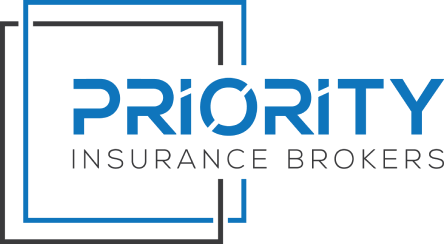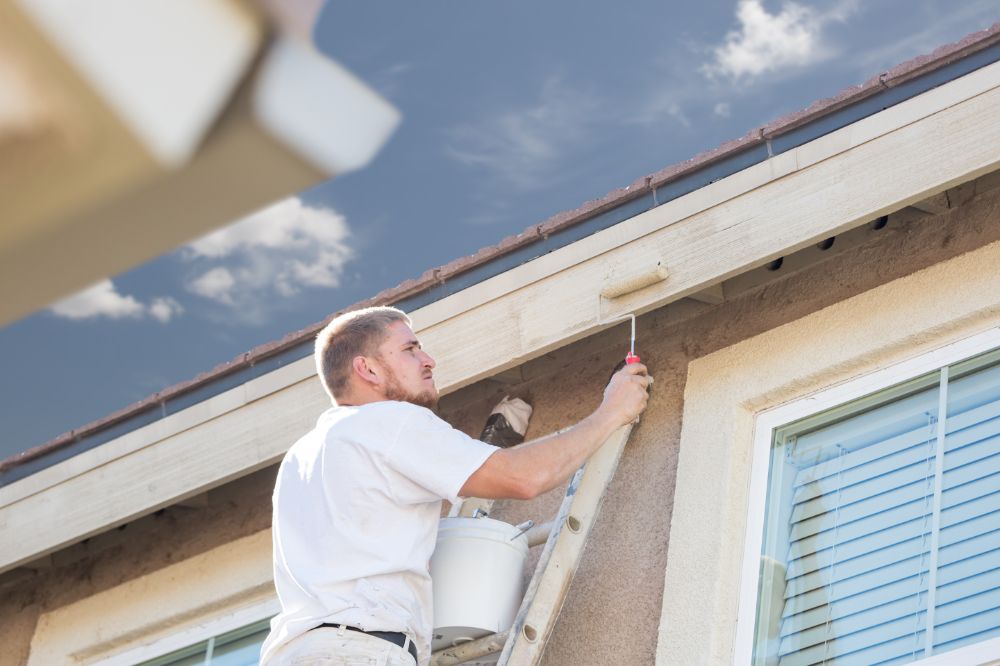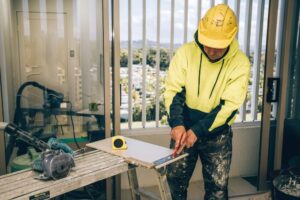If you’re a painter, whether self-employed or running your own painting business, one aspect of operations that you can’t afford to overlook is public liability insurance. This type of coverage serves as a safety net, offering protection against potential financial losses arising from accidents, injuries, or property damage that could occur during the course of your work. Public liability insurance is particularly important for painters due to the unique risks and liabilities associated with this profession. From accidental spillages on customers’ expensive carpets to the potential of causing harm while working at height, there’s a range of scenarios where having adequate coverage could save you from costly out-of-pocket expenses.
In this blog post, we delve into the details of public liability insurance, why it’s a crucial asset for painters, and how it works in a general context. We’ll also discuss the specific risks painters face and how this type of insurance offers protection against these risks.
So, let’s dive in and explore the essential reasons why painters need public liability insurance!
Understanding Public Liability Insurance
At its core, public liability insurance is a safety net designed to protect businesses from the financial consequences of unexpected incidents. Broadly speaking, it’s a form of insurance that covers the cost of legal claims made against a business by third parties who have suffered personal injury or property damage due to the business operations.
This type of insurance serves a crucial purpose in any business environment, particularly for those in trades like painting where the risk of accidents is relatively higher. Not only does it provide financial protection, but it can also contribute to maintaining a company’s reputation by ensuring quick and fair resolution of any claims.
How Does Public Liability Insurance Work?
The mechanics of public liability insurance might seem complex, but they’re quite straightforward once you understand the basics. Let’s break it down.
Firstly, when an incident occurs that causes injury to a third party or damage to their property during your painting operations, the injured party may decide to sue for damages. This is where your public liability insurance comes into play.
Upon receiving a claim, the insurance company steps in to handle the situation on your behalf. This involves everything from investigating the claim’s legitimacy to negotiating settlements and even defending you in court if necessary. If the claim is valid, your insurance policy will cover the settlement amount up to the limit specified in your policy, minus any applicable deductible.
It’s important to remember that public liability insurance doesn’t cover injuries to your employees, intentional damage, or professional mistakes. For these, you would need other types of insurance such as workers’ compensation, commercial property insurance, or professional indemnity insurance respectively.
In essence, public liability insurance acts as a protective shield, helping businesses navigate unforeseen incidents without jeopardising their financial stability. By understanding its importance and functionality, painters can better appreciate its pivotal role in safeguarding their operations.
Why Painters Specifically Need Public Liability Insurance
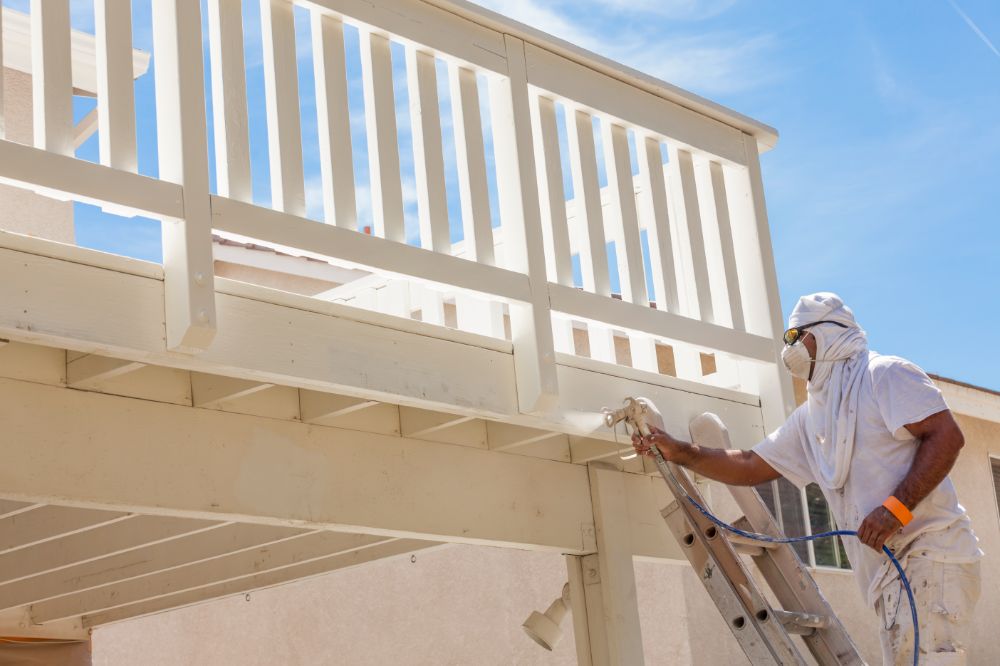
Let’s dive into the specific risks and liabilities that painters face in their line of work. After all, understanding these hazards is the first step towards appreciating the protective value of public liability insurance.
The Specific Risks Painters Face
Every profession has its unique set of challenges and risks, and painting is no exception. A painter’s activities, whether interior or exterior, residential or commercial, expose them to a variety of potential accidents and damages.
For instance, while carrying out a painting job, there could be accidental spills of paint or other materials on a client’s property causing damage. A ladder may fall and break a window, or a painter could accidentally knock over a valuable piece of art or furniture.
Beyond property damage, there’s also the risk of bodily injury. A client, visitor, or even the painter themselves might slip on a wet floor, trip over equipment, or have a mishap with a ladder, leading to injury. These are just a few examples of scenarios where a painter could be held legally liable for the resulting costs.
How Public Liability Insurance Provides Protection
So, how does public liability insurance come into play here? This type of insurance is designed to provide coverage in the event of such unfortunate incidents. It can protect painters from the hefty costs associated with legal claims for damages or injuries caused during their work.
If a claim is made against a painter alleging that they’ve caused property damage or bodily injury while carrying out their work, public liability insurance can cover the legal fees, settlement costs, and any awarded damages, up to the policy limit.
Without this safety net, painters would have to bear these burdens out of pocket, which could lead to significant financial hardship or even bankruptcy. Public liability insurance, therefore, acts as a crucial pillar supporting the financial stability of a painting business.
In short, public liability insurance is not just a safety measure—it’s an invaluable asset for any painter aiming to protect their business and thrive in their industry.
How to Choose the Right Public Liability Insurance for Your Painting Business
Choosing the right public liability insurance for your painting business is just as important as having the insurance itself. But how do you ensure you’re making the best choice? Well, it comes down to understanding the key factors that should guide your selection process and knowing how to compare different providers and policies effectively.
Key Factors in Selecting Public Liability Insurance
The first thing to consider when choosing public liability insurance is the coverage limit. This refers to the maximum amount the insurance company will pay in the event of a claim. It’s crucial to opt for a coverage limit that adequately protects your business without being excessively high. For instance, if a painting job goes wrong and causes property damage or injury, the cost could be substantial. Therefore, your insurance should have a sufficient limit to cover such potential expenses.
Besides the coverage limit, it’s equally important to be aware of policy exclusions. Exclusions are specific situations or incidents that your insurance doesn’t cover. For example, some policies might not cover damages caused by sub-contractors or incidents occurring outside the designated work area. Knowing these exclusions helps you understand the extent of your protection and also allows you to seek additional coverage if needed.
Comparing Insurance Providers and Policies
Insurance isn’t a one-size-fits-all solution, and what works for one painting business might not necessarily work for another. Thus, it’s essential to compare different insurance providers and their policies before making a decision. Start by researching various reputable insurance companies and examining the specific policies they offer for painters. Look at the terms, conditions, coverage limits, exclusions, and, of course, the premiums.
While comparing, remember that the cheapest policy isn’t necessarily the best. You should aim for a balance between cost and comprehensive coverage. Reading reviews and seeking advice from other professionals in the painting industry can also provide valuable insights.
In the end, choosing the right public liability insurance comes down to understanding your business’s unique needs and risks and finding a policy that provides the best possible protection. Remember, it’s not just about fulfilling legal requirements or satisfying client demands – it’s about safeguarding the future of your business.
The Cost of Public Liability Insurance for Painters
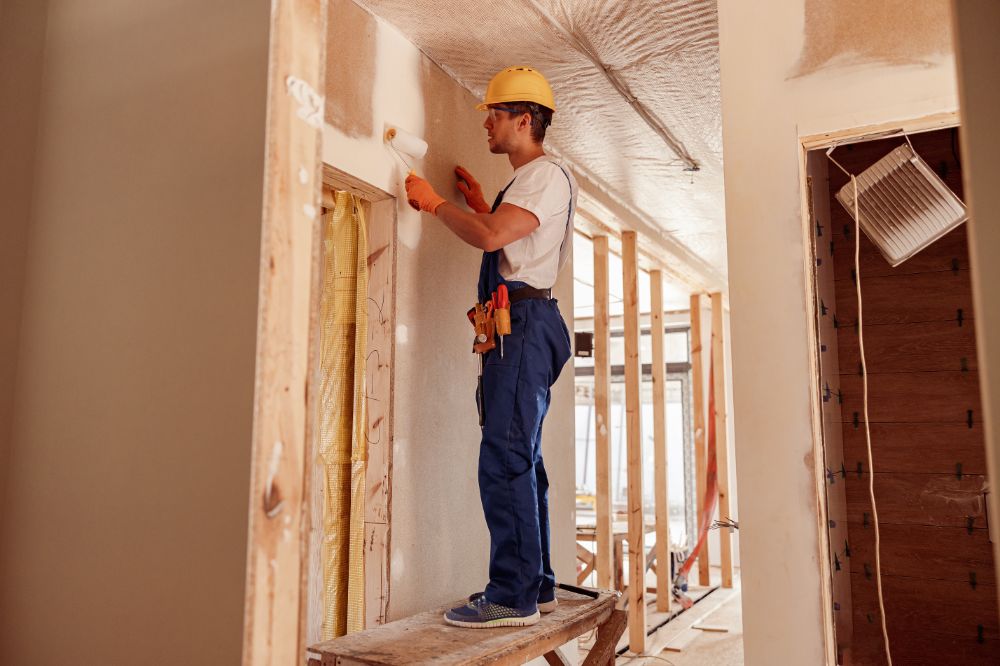
Assessing the cost of public liability insurance for painters is a topic that requires careful consideration. Various factors come into play, influencing the overall price. Despite these costs, it’s crucial to understand why this form of insurance is considered a worthwhile investment for any painting business.
Factors Influencing the Cost of Public Liability Insurance
The first aspect we’ll delve into is the factors that can influence the cost of public liability insurance for painters. In essence, insurance providers consider several aspects when determining the premium for your policy. These include the size of your painting business, the number of employees, the scope and nature of the projects you undertake, and your claims history.
For instance, a larger painting company with numerous employees will likely face a higher premium than a solo painter. This is because the potential risk exposure is greater with more people involved in the operations. Similarly, if you’re working on large-scale commercial projects or high-risk environments, your insurance premiums could be higher due to the increased likelihood of accidents or damages. Lastly, if you’ve had numerous claims in the past, insurers may perceive your business as high-risk, leading to an increase in premium costs.
The Worthwhile Investment of Public Liability Insurance
Given the potential costs associated with public liability insurance, some painters might question whether it’s a necessary expense. To answer this, it’s important to consider the financial implications of not having this coverage. Without public liability insurance, a single accident or damage claim can lead to enormous out-of-pocket expenses, which can be devastating for a small business.
Furthermore, having public liability insurance isn’t just about financial protection; it’s also about reputation. Customers often prefer hiring contractors who are fully insured, as it provides them with peace of mind knowing they won’t be held liable for any accidents that occur during the project. In this light, public liability insurance can be seen as an investment into the long-term sustainability and reputation of your painting business.
In essence, while the cost of public liability insurance for painters can vary based on numerous factors, it’s an investment that provides vital protection for your business. It safeguards your financial well-being, bolsters your professional reputation, and offers peace of mind for both you and your clients. Given these benefits, it’s clear that public liability insurance is not merely an expense, but a fundamental asset for any serious painting business.
Take Action Today
Investing in a good public liability insurance policy is not a sign of pessimism, but a sound business strategy. It’s about anticipating potential challenges and ensuring you’re equipped to weather them without jeopardising your livelihood.
Remember to consider carefully the various factors when selecting your policy. Pay attention to the coverage limits, and any exclusions, and compare different providers before making a decision. While the cost may seem like a burden now, remember that it pales in comparison to the potential costs of a liability claim made without insurance coverage.
So, don’t hesitate. Protect your painting business today with the right public liability insurance. The peace of mind it brings you, knowing that your business can withstand unexpected legal or financial blows, is invaluable. As the saying goes, “It’s better to be safe than sorry.”
Frequently Asked Questions
What is public liability insurance and why do painters need it?
Public liability insurance is a coverage that protects businesses from potential financial losses resulting from accidents, injuries, or property damage during their operations. Painters, due to the unique risks associated with their profession (e.g., accidental spillages, working at heights), can benefit significantly from this coverage to protect against unforeseen liabilities.
How does public liability insurance function?
When an incident leads to injury or damage during painting operations, the injured party might sue for damages. The insurance company would then manage the situation, investigating the claim, negotiating settlements, and possibly defending the painter in court. If the claim is validated, the insurance policy will cover the settlement, up to a specified limit, minus any applicable deductible.
What specific risks do painters face that make this insurance crucial?
Painters encounter various risks in their profession. These include accidental paint spills on valuable property, ladders causing damage or injury, tripping over equipment, and other hazards that can lead to property damage or bodily injury. Public liability insurance ensures painters aren’t personally responsible for the financial implications of these accidents.
How can I choose the right public liability insurance for my painting business?
When selecting insurance, consider the coverage limit, be aware of policy exclusions, and compare different providers and policies. Ensure the policy reflects the size and nature of your painting operations, the number of employees, and any previous claims. Reviews and recommendations from industry peers can be invaluable.
Isn’t public liability insurance just an additional cost for painters?
While there’s a cost associated with public liability insurance, it’s crucial to view it as a protective investment. Without this insurance, painters could face substantial out-of-pocket expenses from a single accident or claim. Moreover, having insurance enhances a painter’s professional reputation, as clients often prefer insured contractors.
